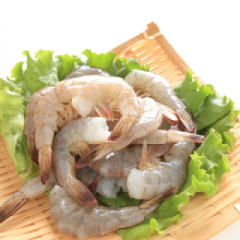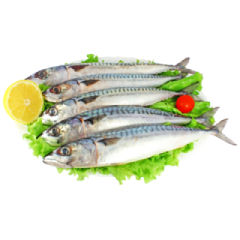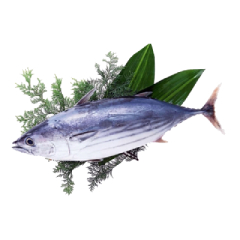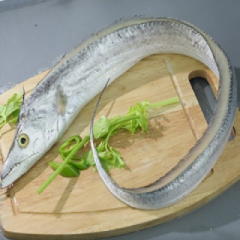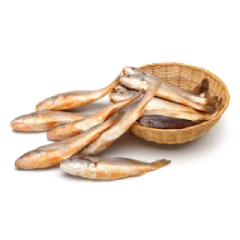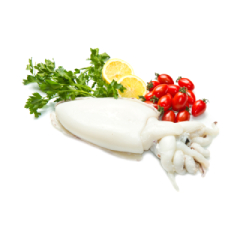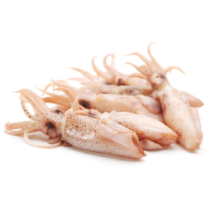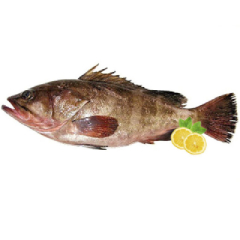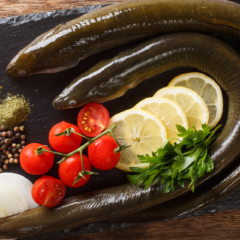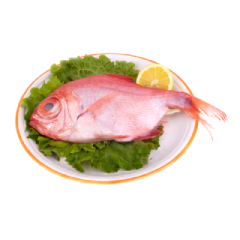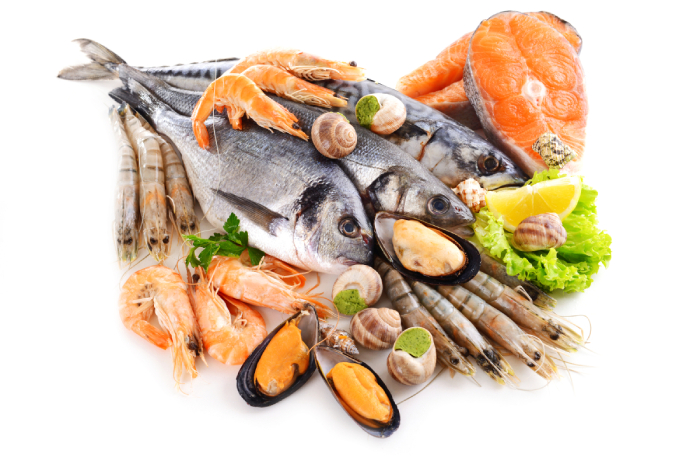
Sea Food & Fish
Fish is an exception. It is a rich source of polyunsaturated fatty acids and should be included in your diet at least two or three times a week. So, eat more fish than meat or chicken. This is the primary reason for the growing popularity of fish – it has proven to be one of the most beneficial foods we can eat. The omega-3 fatty acids found in seafood are essenial to optimal childhood development.
Medical research has proved that children born to mothers who consume higher quantities of omega-3- rich fish are healthier at birth, exhibit higher IQs, and have better health later in life. In fact fish and fisheries plays an important role in the nutrition, livelihood, ecology and health security of different economies. Global demand for fish has doubled since 1973, and ninety percent of the production increase was in developing countries.
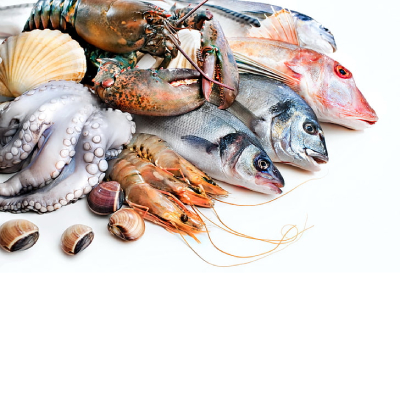
Fish is the flesh of numerous freshwater and saltwater dwelling cold-blooded aquatic vertebrates. They are typically ectothermic, covered with scales and equipped with two sets of paired fins and several unpaired fins. From a chef’s point of view, fishes come in two basic varieties—shellfish and finfish. According to this categorization finfish are equipped with fins, backbones and gills, while shellfish have shells of one form or another.
Globally, consumer demand for fish continues to climb, both amongst the affluent as well as amongst the not so well to do sections. Nearly one billion people, most of them in developing countries, currently depend on fish for their primary source of protein.
People have been catching and eating fish for as long our history itself. Fish is one of the few food resources that man still hunts which make certain species harder to source at certain times of the year.
WHY IS FISH GOOD FOR US?
There are four major health advantages from seafood consumption:
Cardo-vascular benefits which reduce the risk of heart attack.
The anti-inflammatory properties of mega-3 products in the body.
Childhood brain and sight development.
Likely anti-cancer benefits.
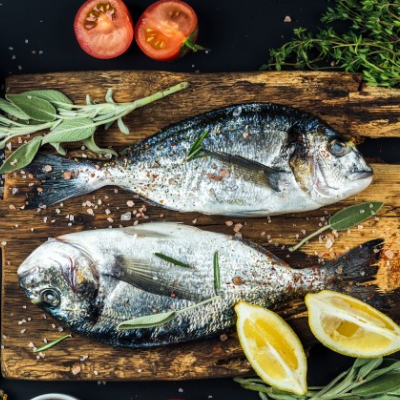
POPULAR FISH SPECIES
Most fish are healthy to eat. And fish are an excellent source of low-fat protein. Eating fish may also reduce the risk of heart disease, diabetes and other chronic illnesses. Some common food fish species are listed below:
CATEGORIZATION OF FISH
Fish without shells are separated into two groups-freshwater fish and saltwater fish. Because salt water provides more buoyancy than fresh water. Saltwater Fish like cod, flounder and tuna have thicker bones while freshwater fish, like catfish, perch and trout don’t have a heavy skeletal framework rather their structure is based on hundreds of minuscule bones
Apart from this we happen to classify fish also in terms of the pattern of swimming. Flatfish swim horizontally along the bottom of the sea, are shaped like an oval platter, the top side being dark and the bottom white. Both eyes are on the side of the body facing upward. Roundfish have a rounder body, with eyes on both sides of the head.
Further, fish are divided into three types on the basis of their fat content
Lean – The oil in lean fish is concentrated in the liver, rather than being distributed through the flesh. Their fat content is less than 21⁄2 percent and the flesh is mild and lightly colored. Fish in the lean category include black sea bass, brook trout cod, drum flounder, haddock, hake, halibut, pol-lack, ocean perch redsnapper, rockfish and tilefish.
Moderate-fat – Moderate-fat fish usually have less than 6 percent fat and include barracuda, striped bass, swordfish bonito tuna and whiting.
High-fat – The fat content of high-fat fish can reach as high as 30 percent (as with eel), but the average is closer to 12 percent. Some of the more popular high-fat fish are Atlantic herring, butterfish, mackerel, smelt, sturgeon and yellowtail.
The wider distribution of fat in moderate- and high-fat fish gives their flesh a darker color, firmer texture and more distinctive flavor.
BUYING AND CHOOSING OF FISH
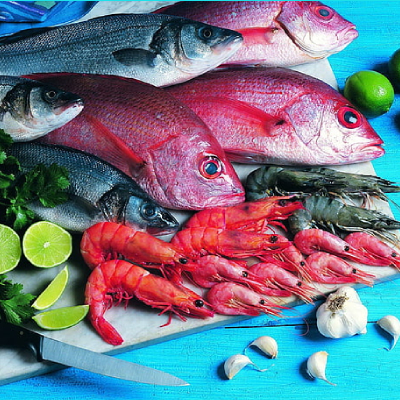
Fresh or frozen fish should be purchased just before leaving the market so it is exposed to unsafe temperatures for as short a time as possible. It should be placed in a plastic bag to prevent any leakage from contaminating any other foods. Bring a cooler along to store the fish in while traveling home or pack the fish in ice. To maintain the quality of the fish, it needs to be kept at a temperature under 40°F.
When buying fresh, whole fish, one must look for the following characteristics:
Bright
Clear
Full eyes (cloudy or sunken eyes denote stale fish)
Shiny and brightly colored skin
A fresh, mild odor
Firm flesh that clings tightly to the bones and springs back when pressed with finger
Red to bright pink gills, free from any slime or residue.
COOKING FISH
When cooking and serving fish, the meat must be handled properly to prevent contamination. One must use a different platter and cooking utensils for cooked fish than what was used for the raw fish, unless they have been properly cleaned and dried after exposure to the raw fish. Be sure the raw fish does not come in contact with foods that have already been cooked or foods that do not require cooking before being consumed, such as raw vegetables and fruit.
Fish can be cooked in myriad ways including baking, broiling, frying, grilling and steaming. A general rule for cooking fish is to measure it at its thickest point, then cook 8 to 10 minutes per inch (4 to 5 minutes per half inch). To test fish for being properly cooked, use a fork to prod it at its thickest point. The fish should be opaque, its juices milky white. Undercooked fish is translucent, its juices clear and watery; overcooked fish is dry and falls apart easily. Another test is to insert an instant-read thermometer at the thickest point-fish that’s done will register 145°F.

POPULAR CUTS of Fish
Fillet is a boneless cut such as a side of Salmon or a fillet of sole
Paupiette is a stuffed roll of fillet
Supreme is a slice cut off a fillet, sometimes cut at a slant. This cut is now commonly called a pavé which means ‘a slab or block’ and usually applied to cake or dessert – but now is fashionably applied to fish
Darne is a cut of steak of round fish cut on the bone
Cravatte is a fillet tied in a knot
Delice is a neatly folded fillet
En Tresse a platted fillet
Goujon a strip of fillet usually pané (floured, eggwashed and breadcrumbed)
Tronçon is a cut of steak of flatfish cut on the bone.


